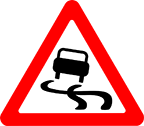
Your Car
Prepare your car for winter. Start with a checkup that includes:
- Checking the ignition, brakes, wiring, hoses and fan belts.
- Changing and adjusting the spark plugs.
- Checking the air, fuel and emission filters, and the PCV valve.
- Inspecting the distributor.
- Checking the battery.
- Checking the tires for air, sidewall wear and tread depth.
- Checking antifreeze levels and the freeze line.

Necessary Equipment
An emergency situation on the road can arise at any time and you must be prepared. In addition to making sure you have the tune-up, a full tank of gas, and fresh anti-freeze, you should carry the following items in your trunk:
- Your car should have a tune-up (check the owner’s manual for the recommended interval) to ensure better gas mileage, quicker starts and faster response on pick-up and passing power.
- Properly inflated spare tire, wheel wrench and tripod-type jack
- Shovel
- Jumper cables
- Tow and tire chains
- Bag of salt or cat litter
- Tool kit
Essential Supplies
Be prepared with a “survival kit” that should always remain in the car. Replenish after use. Essential supplies include:
- Working flashlight and extra batteries
- Reflective triangles and brightly-colored cloth
- Compass
- First aid kit
- Exterior windshield cleaner
- Ice scraper and snow brush
- Wooden stick matches in a waterproof container
- Scissors and string/cord
- Non-perishable, high-energy foods like unsalted canned nuts, dried fruits, and hard candy.
- In addition, if you are driving long distances under cold, snowy, and icy conditions, you should also carry supplies to keep you warm such as heavy woolen mittens, socks, a cap and blankets.

Getting Underway…
- Clean all snow and ice from the entire vehicle — hood, roof, truck, lights and windows
- Start your vehicle and turn the heater on for a minute or two using the defroster. This will prevent moisture from fogging the windshield when warm air hits the glass
- Clear a path in front of the wheels for several feet
 Driving safely on icy roads
Driving safely on icy roads
- Decrease your speed and leave yourself plenty of room to stop. You should allow at least three times more space than usual between you and the car in front of you.
- Brake gently to avoid skidding. If your wheels start to lock up, ease off the brake.
- Turn on your lights to increase your visibility to other motorists.
- Keep your lights and windshield clean.
- Use low gears to keep traction, especially on hills.
- Don’t use cruise control or overdrive on icy roads.
- Be especially careful on bridges, overpasses and infrequently traveled roads, which will freeze first. Even at temperatures above freezing, if the conditions are wet, you might encounter ice in shady areas or on exposed roadways like bridges.
- Don’t pass snow plows and sanding trucks. The drivers have limited visibility, and you’re likely to find the road in front of them worse than the road behind.
- Don’t assume your vehicle can handle all conditions. Even four-wheel and front-wheel drive vehicles can encounter trouble on winter roads.

If your rear wheels skid…
- Take your foot off the accelerator.
- Steer in the direction you want the front wheels to go. If your rear wheels are sliding left, steer left. If they’re sliding right, steer right.
- If your rear wheels start sliding the other way as you recover, ease the steering wheel toward that side. You might have to steer left and right a few times to get your vehicle completely under control.
- If you have standard brakes, pump them gently.
- If you have anti-lock brakes (ABS), do not pump the brakes. Apply steady pressure to the brakes. You will feel the brakes pulse — this is normal.
If your front wheels skid…
- Take your foot off the gas and shift to neutral, but don’t try to steer immediately.
- As the wheels skid sideways, they will slow the vehicle and traction will return. As it does, steer in the direction you want to go. Then put the transmission in “drive” or release the clutch, and accelerate gently.

If you get stuck…
- Do not spin your wheels. This will only dig you in deeper.
- Turn your wheels from side to side a few times to push snow out of the way.
- Use a light touch on the gas, to ease your car out.
- Use a shovel to clear snow away from the wheels and the underside of the car.
- Pour sand, kitty litter, gravel or salt in the path of the wheels, to help get traction.
- Try rocking the vehicle. (Check your owner’s manual first — it can damage the transmission on some vehicles.) Shift from forward to reverse, and back again. Each time you’re in gear, give a light touch on the gas until the vehicle gets going
If You Become Stranded…
- Do not leave your car unless you know exactly where you are, how far it is to possible help, and are certain you will improve your situation.
- To attract attention, light two flares and place one at each end of the car a safe distance away. Hang a brightly colored cloth from your antenna.
- If you are sure the car’s exhaust pipe is not blocked, run the engine and heater for about 10 minutes every hour or so depending upon the amount of gas in the tank.
- To protect yourself from frostbite and hypothermia use the woolen items and blankets to keep warm.
- Keep at least one window open slightly. Heavy snow and ice can seal a car shut.
- Eat a hard candy to keep your mouth moist. Sources: National Safety Council,
Sources: New York State Department of Motor Vehicles, AAA, Washington State Government Information & Services

